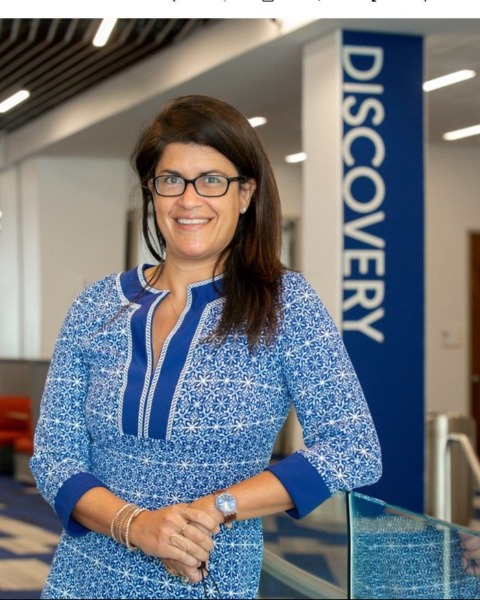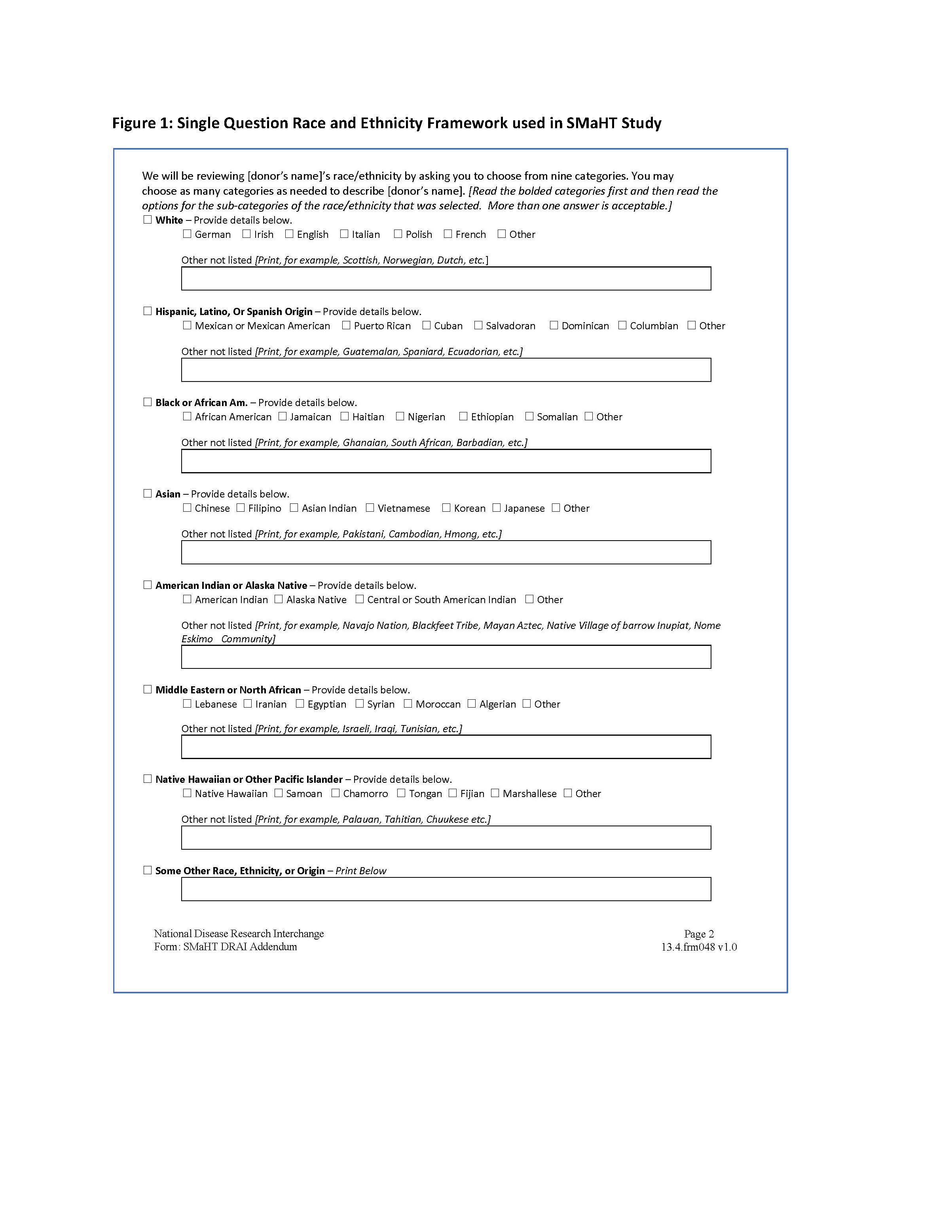Health Equity/Social Determinants of Health 3
Session: Health Equity/Social Determinants of Health 3
431 - Integration of a New Race and Ethnicity Framework for the Somatic Mosaicism Across Human Tissues (SMaHT) Project: Early Findings in Addressing Past Reporting Challenges
Saturday, April 26, 2025
2:30pm - 4:45pm HST
Publication Number: 431.5294
Raquel G. Hernandez, Johns Hopkins All Children's Hospital, Tampa, FL, United States; Phoebe McDermott, Johns Hopkins All Children's Hospital, Sarasota, FL, United States; Melissa VonDran, National Disease Research Interchange, Philadelphia, PA, United States; M. Kathryn Leonard, Johns Hopkins All Children's Hospital, Philadelphia, PA, United States; thomas Bell, NDRI, Philadelphia, PA, United States; Melissa A. Faith, Johns Hopkins University School of Medicine, Palmetto, FL, United States

Raquel G. Hernandez, MD, MPH (she/her/hers)
Associate Professor of Pediatrics
Johns Hopkins All Children's Hospital
Tampa, Florida, United States
Presenting Author(s)
Background: The Somatic Mosaicism Across Human Tissues (SMaHT) Project is a NIH initiative that seeks to investigate somatic variations and their implications on health while generating a somatic variation catalog. Historically, genomic research has faced challenges related to underrepresenting diverse populations. Prior frameworks assessing race and ethnicity (R&E) have contributed to challenges in understanding donor diversity because of incomplete characterization of ethnic subgroups, high non-response rates and challenges identifying multi-racial participants. In an integrated project model, the SMaHT tissue procurement team (TPC) partnered with ethical, legal, and social implications (ELSI) team. The ELSI team proposed using a recently validated R&E framework to assess the diversity of SMaHT authorized donors. Prior data on the value of this new framework has not been described within genomic studies approaching next of kin.
Objective: To compare outcomes of a newly developed single-question R&E framework to a traditional framework within a genomic study.
Design/Methods: The SMaHT donor screening assessment uses a single-question R&E item introduced by the U.S. Census Bureau in March 2024 (Figure 1). This framework differs from the 2-question approach by combining R&E into a single question, encouraging respondents to select all applicable options and adding Middle Eastern or North African as a response. The TPC implemented the single-item framework within two U.S. Organ Procurement Organizations (OPOs). OPO’s use the traditional framework as their initial screening process for all donors allowing for a direct comparison of the two frameworks among SMaHT eligible donors.
Results: 32 donors have been authorized for the SMaHT project since its launch (Figure 2). In comparing the responses of next of kin who were offered the traditional 2 question framework to those who received the single-question framework at the time of authorization, greater ethnic diversity was noted in response to the single-question framework, where 3% of respondents were identified as Hispanic, Latino or Spanish Origin, 3% as American Indian and 9% of respondents selected more than one race. All respondents submitted a response associated with the donor’s race (100%) within only 5/32 (15%), electing not to include an ethnicity response below the race category.
Conclusion(s): A single-item R&E framework promotes reporting advantages, including limiting non-response rates and characterizing greater ethnic diversity compared to the traditional framework in genomic studies.
Figure 1. Single Question Race and Ethnicity Framework used in SMaHT Project

Figure 2. Comparison of Traditional (2-Question Framework) Responses To New, Single-Question Framework On Demographics Of Authorized Donors For The SMaHT Project
.jpg)

